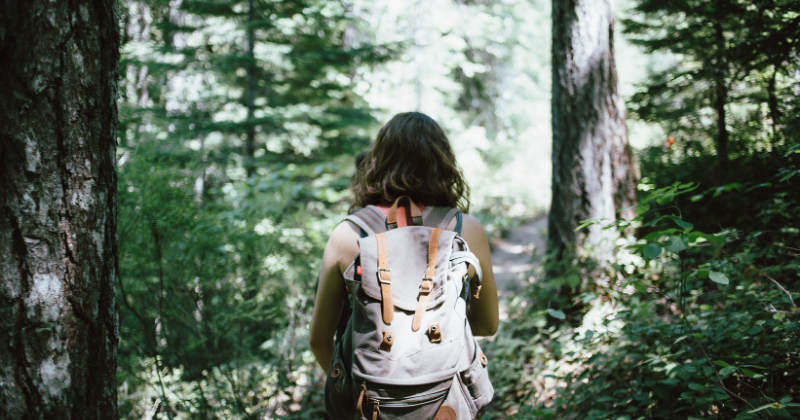By Megan Gallagher
Hiking Physical Therapy Tips
As the temperatures start to cool down, and the leaves start to change colors, many people find Autumn to be the best time to go hiking. Many may try to get as many hikes in as possible before the temperatures get too cold and the trails become covered in snow. In order to have the best hiking experience possible, here are a few tips and tricks from the view point of physical therapists.
Benefits of hiking:
Hiking offers many benefits that can be done without the cost of monthly gym fees or excess gym equipment. It is easy to find a trail based on your level of activity, distance you want to hike, elevation to climb, and overall challenge you are looking for. Hiking can also…
- Improve your balance, especially on rocky terrain, changing surfaces, changes in the slope of the climb, and by avoiding any obstacles that may have fallen into the path
- Increase cardiovascular fitness by reducing blood pressure, decreasing risk of heart disease, and lowering cholesterol levels
- Increase bone density due to the constant weightbearing through the legs, promoting strong bones
Hiking or Trekking Poles
Some people may choose to hike with poles, whereas others may leave them at home. Here are some of the reasons people may choose to bring hiking/trekking poles on their hikes:
- Poles will help reduce some forces on the joints, especially the knees and hips. Those with hip and knee pain who wish to continue hiking could alleviate some compressive forces by distributing the forces into the arms and upper body when using poles
- Poles will also help you to maintain a more upright posture because you are required to push down on the poles which will help to active extensors muscle groups, preventing you from slouching
- Poles add support if terrain is uneven and hikers are concerned about their balance, especially when going down hill.
Hiking: Physical Therapy Exercises
It is always best to exercise for your hike, as well as warm-up and stretch prior to beginning your trek. Exercises should include movements that will target the glutes and quads. When preparing to go hiking, physical therapy activities may include practicing lunges, squats, bridges, and side steps are great exercises to incorporate into your exercise routine in order to maximize your hiking ability.
In addition to leg exercises, it is just as important to strengthen your core. Some examples of core exercises include planks, bird dogs, and mountain climbers. Having a strong core will help improve balance, especially on uneven surfaces.
As valuable as strength training is, stretching should also be performed to prevent injury, especially on long hikes. Stretching the hamstrings, quads, and calves are important muscle groups to stretch before and after your hike.
Don’t forget to bring lots of water, sunscreen, and a small first aid kit to have the best and safest hiking experience!
For more information on exercises and preparation for hiking, biking, fall sports or other physical activity, contact any of our Capital Area Physical Therapy locations in Malta, Queensbury, or Clifton Park at 518-289-5242.






